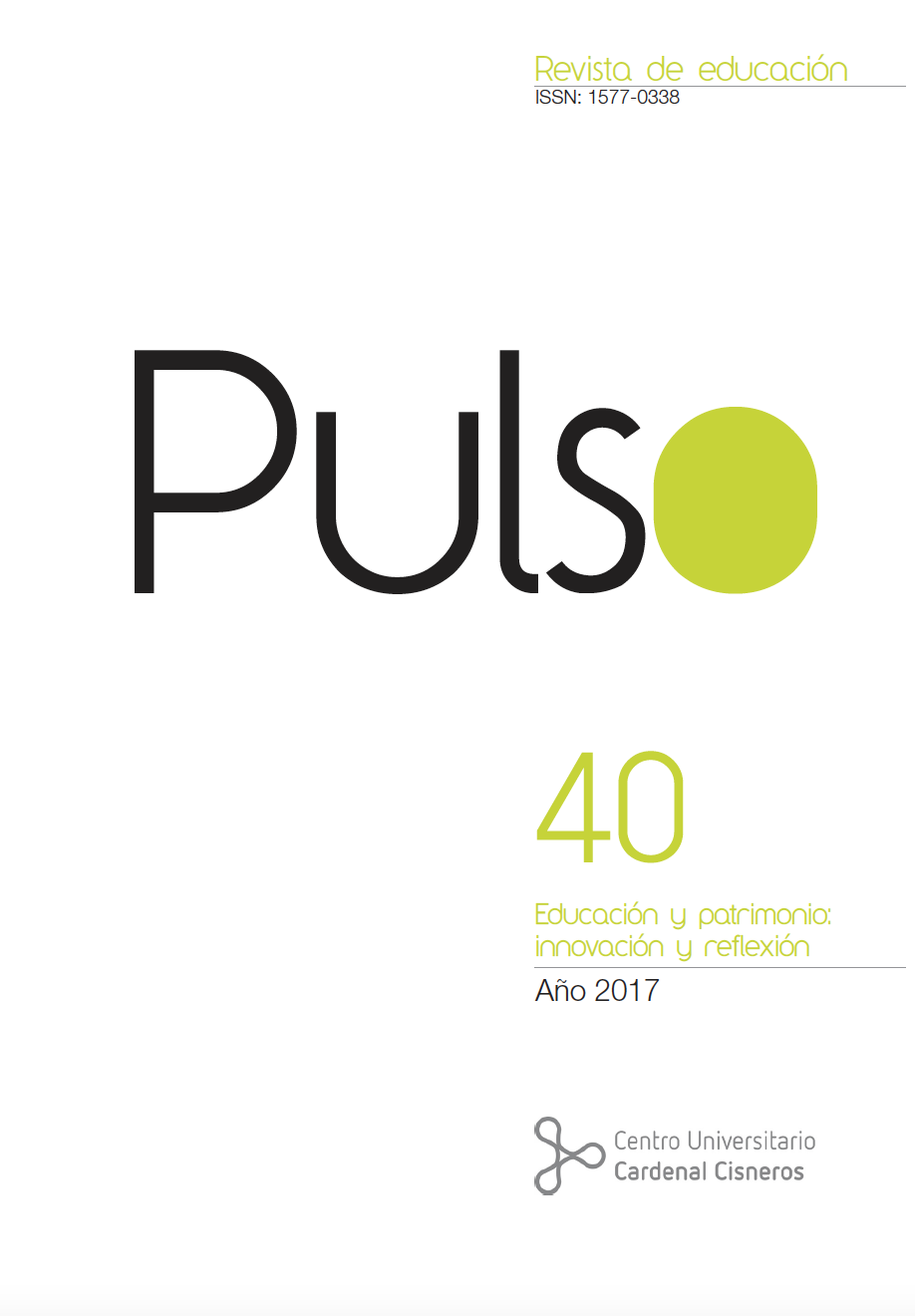Inclusiveness in Heritage Education through Augmented Realitys
DOI:
https://doi.org/10.58265/pulso.5119Keywords:
Heritage Education, Inclusivity, Accessibility, Augmented reality, Natural and Cultural HeritageAbstract
We live in a dynamic, active, highly communicated and increasingly interactive society. The evolution of new technologies is something that stopped surprising us along time ago. As Heritage Education professionals and technology consumers, we have the chance to innovate the traditional dissemination models of educational heritage. There is an intersection of factors that lead us to an appropriate moment to approachHeritage Education through ICTsin favor of inclusiveness. Society demands the real possibility of citizen participation with integration of all social groups, without excluding anyone.This means creating open and prepared spaces to attend to the needs of each person using heritage as a nexus to achieve equality and inclusiveness. We present a pilot study based on the use of Augmented Reality due to the boundless possibilities that it offers for Educational Heritage
Downloads
References
Adell, J. y Castañeda, L. (2012). Tecnologías emergentes, ¿pedagogías emergentes? En J. Hernández, M. Pennesi, D. Sobrino y A. Vezquez (coord.). Tendencias emergentes en educación con TIC. Barcelona: Asociación Espiral, Educación y Tecnología.
Cabero, Almenara, J., et al. (2016). Realidad aumentada y educación. Innovación en contextos formativos. (1ª Ed.). Barcelona: Editorial: Octaedro.
Darwin, C. (1859). El origen de las especies. Recuperado de http://www.rebelion.org/docs/81666.pdf
Espinosa Ruiz, A. y Bonmatí Lledó, C. (Eds.). (2013). Manual de accesibilidad e inclusión en museos y lugares del patrimonio cultural y natural. (1ª Ed.). Gijón: Ediciones Trea.
Finat, J. (2011). Accesibilidad y educación Patrimonial. En Fontal, Ibañez, Gómez (coords). Mirando a Europa: estado de la cuestión y perspectivas de futuro. Ponencias. I Congreso Internacional de Educación Patrimonial. Madrid: Ministerio de Educación, Cultura y Deporte.
Fontal Merillas, O. (coord). (2013). La educación patrimonial. Del patrimonio a las personas. (1ªEd.). Gijón: Ediciones Trea.
Hernández Ríos, M. L. (2017). La educación patrimonial en contexto de educación no formal: un desafío para maestros en formación. En Cambil Hernández, M. E. y Tudela Sancho, A. (Coords). (2017). Educación y patrimonio cultural. Fundamentos, contexto y estrategias didácticas.(1ªEd.). Madrid: Ediciones Pirámide (pp. 236-237).
Instituto del Patrimonio Cultural de España (2013). Plan Nacional de Educación y Patrimonio. Recuperado de http://ipce.mcu.es/pdfs/PNEducPatrimonio.pdf
Ruiz Torres, D. (2013). La realidad aumentada y su aplicación en el patrimonio cultural. (1ª Ed.). Gijón: Ediciones Trea.
Santacana Mestre, J. y López Benito, V. (coords). (2014). Educación, tecnología digital y patrimonio cultural. Para una educación inclusiva. (1ª Ed.). Gijón: Ediciones Trea.
Downloads
Published
How to Cite
Issue
Section
License
Copyright (c) 2022 Pulso. Revista de educación

This work is licensed under a Creative Commons Attribution-NonCommercial-NoDerivatives 3.0 Unported License.
This journal offers immediate open access to its content based on the idea that offering readers free access to research favours a global exchange of knowledge.
Papers are published in the electronic version of the journal under a Creative Commons License: Attribution-NonCommercial-No derivatives 4.0 International
Authors are allowed and encouraged to promote the post-print version (reviewed and accepted for publication version) of their work online before publishing them. This favours their earlier circulation and dissemination and thus a possible increase in their citation and reach among the academic community.














